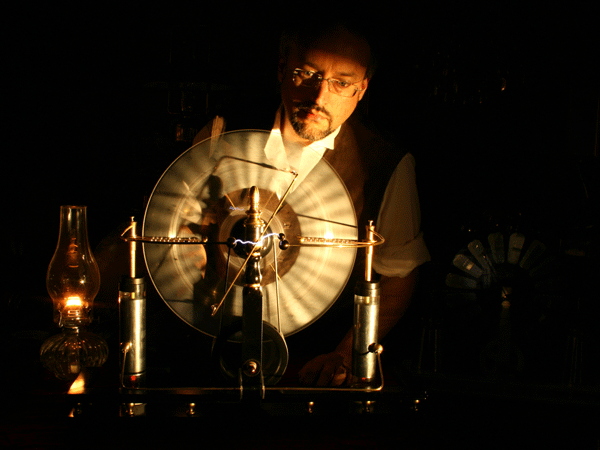
In the early 1880s, British inventor James Wimshurst created an electrostatic generator called the Wimshurst Influence Machine, influence machines being a class of generators that separate electric charges through electrostatic induction, or influence. Not only did the sparks created by the machine provide for great scientific demonstration, but experiments like the “electric kiss” were popular parlor pastimes. In MAKE Volume 17, a fine gentleman by the name of Jake von Slatt shared his detailed instructions for making one. We just ported the DIY into Make: Projects for all to build. How does it work?
The counter-rotating disks continually pass their metal strips (or sectors) near one another, and then separate them, increasing the sectors’ electrical potential or charge. A pair of neutralizing bars with conductive brushes contact each sector while it’s still under electrostatic influence, grounding its positive side and leaving it with a negative charge, or vice versa. A pair of charge-collecting combs strip off the charges — negative on one side and positive on the other — and deliver them to the Leyden jars where they are stored. When sufficient voltage builds up, a spark jumps the gap between 2 electrodes — CRACK!
Head over to the build on Make: Projects for tools, materials, crystal clear photos, step-by-step instructions, and an option to download the project as a PDF. Your parlor will never be the same.
ADVERTISEMENT







